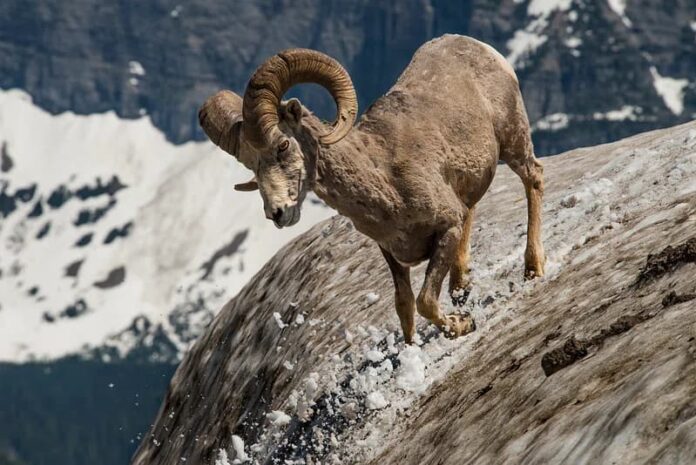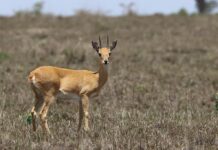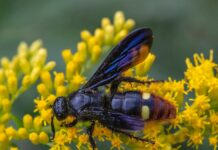Wild goat species inhabit forests, montane forests, rocky areas, and shrublands in various parts of the world. They are the type of goats that you usually see standing on rocks or steep hills in photos. Today, we are going to talk about all wild goat species that you should see. Some of them look amazing, so feel free to check them out.
Ibex
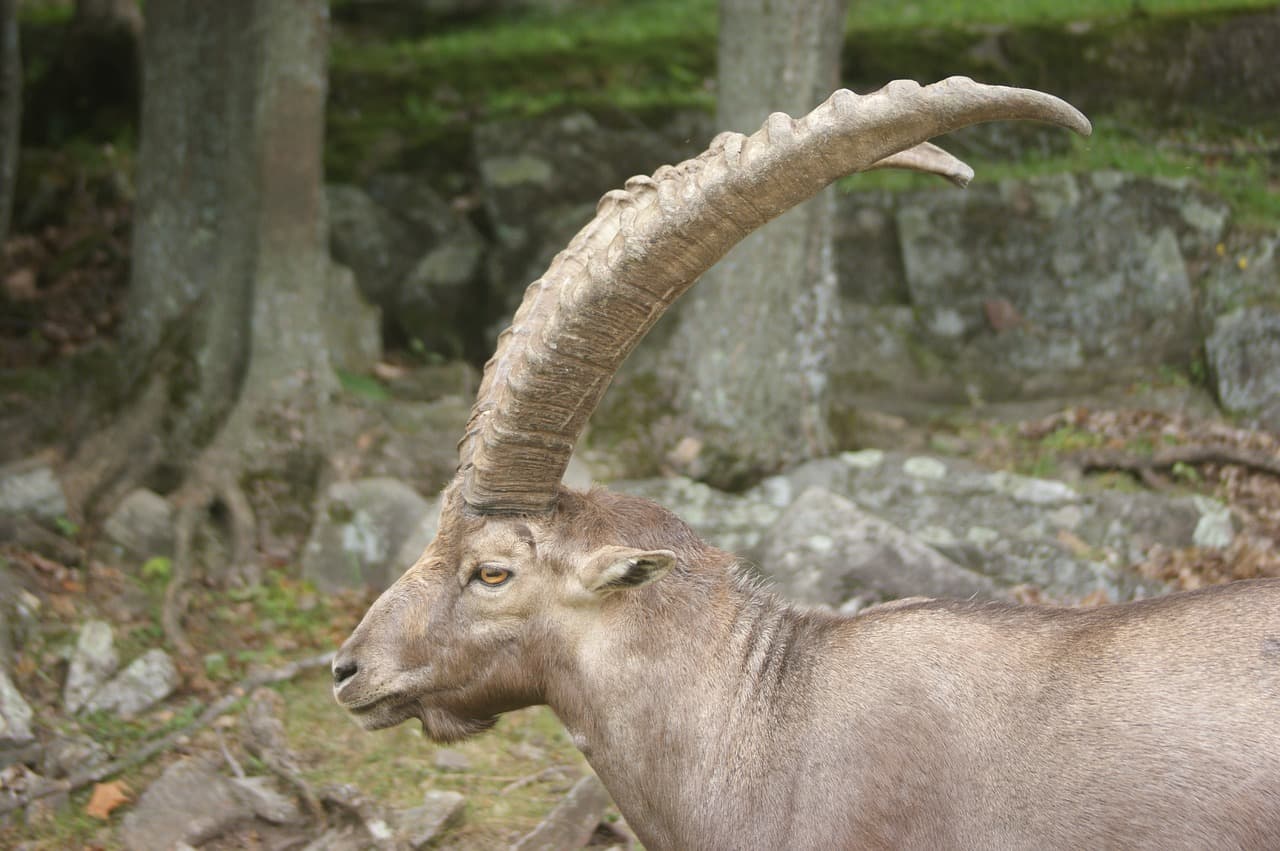
You can tell an ibex by the male’s large majestic recurved horns with traverse ridges in the front. The special thing about this wild goat species is that its distribution is across various areas including East Africa, Eurasia, and North Africa. We are going to see some important details of each ibex species below, let’s check them out,
1Alpine Ibex

Being quite large, alpine ibexes have stocky bodies and they can grow up to 90 to 101 centimeters. An Alpine ibex has a brownish-gray coat that becomes lighter on the belly, and it has dark markings on its chin and throat. Look at how stunning those horns are, and that is the beauty of the ibex wild goats. Though larger in males, both males and females have large backward-curving horns with an elliptical cross-section and a trilateral-shaped core. These horns are not just for show, adult males use their horns to fight for access to females during the breeding season.
Alpine ibexes are the residents of the European Alps, living in Austria, Bulgaria, France, Germany, Slovenia, and Switzerland. They like living in open alpine meadows and steep rough terrains where they feed on grass. Their robust legs with sharp hooves allow them to scale their mountainous habitats, making them excellent climbers. When there is danger, they will retreat to the steepest rock but they have very few predators. Alpine ibexes also migrate in line with the seasons to follow the growth of vegetation. In summer and fall, they live in Alpine meadows and they will retreat to steep south-facing slopes in winter.
2Nubian Ibex
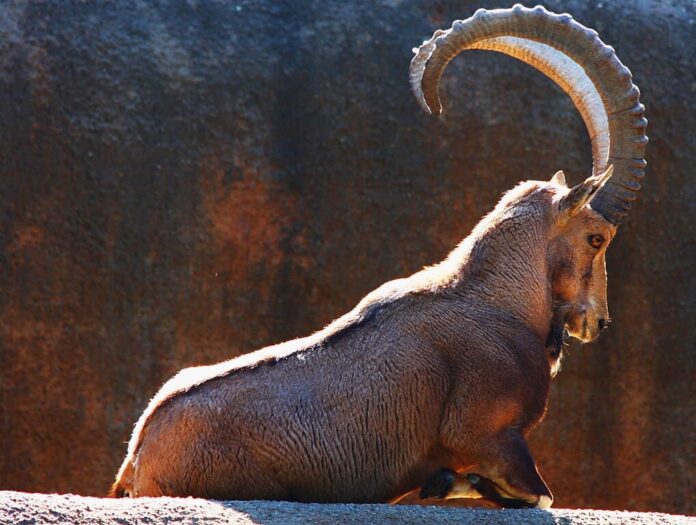
Standing only around 65 to 75 centimeters tall at the shoulder, this is the smallest ibex species in the world. A Nubian ibex has a tan body with a white rump and underbelly along with a dark brown mane down its back. It also has a shiny coat that reflects the harsh sunlight, and that coat is also waterproof in case of rain. Despite the small body, it has long thin horns of around 1 meter that extend up and then backward and down. The fascinating part is that a male’s horns are not only larger but also with large bulges. These bulges prevent the horns from sliding while the males are locked in combat.
As for this ibex species, it occurs in the Middle East; mostly in the highlands of Egypt and Sudan’s Red Sea hills. Nubian ibex is the only ibex species with the adaptation to live in arid regions. These desert-dwellers roam dry and rough mountainous terrains across their ranges foraging for food on the ground. Sometimes they rear up on their hind legs to reach leaves in trees, and they can also climb into trees while feeding. Their favorite meals are annual plants. Sadly, this species is Vulnerable and the population decline still continues today due to habitat destruction, habitat fragmentation, and hunting.
3Siberian Ibex
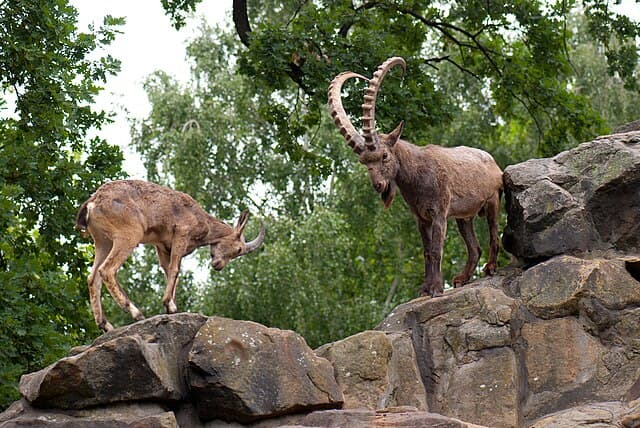
The Siberian ibex aka Asian ibex is a tall wild goat species that stands around 88 to 100 centimeters at the shoulder. In fact, it is the longest and heaviest member of the genus Capra, and that unique appearance says it all. The goat’s body is covered by a dark brown coat with a dorsal stripe that runs from the neck to the tail while the underparts are grayish. Just like other ibex males, this one also has large horns with prominent ridges on the frontal surfaces. Apart from the horns, you can also tell males from females by the gray saddle patches on the male’s back. Siberian ibexes have long pointed beards in both sexes, and they both have large scent glands across and beneath the tail.
This wild goat species inhabits long mountain systems in central Asian deserts and the northwestern Himalayas. Siberian ibexes inhabit alpine meadows, high-altitude steppe, and semi-desert regions. They like living at the vegetation line and well above the tree line feeding on alpine grasses and herbs. Similar to a few other ibex species, this one is also facing population decline due to various threats. Some of the causes are predation from brown bears, dholes, and snow leopards, and overhunting by foreign and wealthy hunters.
4Spanish Ibex
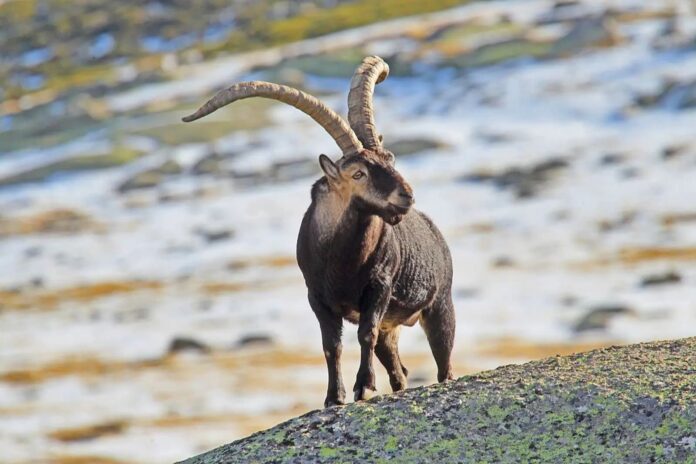
While most ibex species have recognizable horns, the Spanish ibex has more than just those. One of their special features is the large and flexible hooves yet short legs. This unique physical adaptation actually benefits them when it comes to running and leaping on bare, rocky, rough, and steep slopes. They also have large horns that curve out and up and then back, inward, and up or down. On top of that, they also have excellent hearing and vision as well and these help a lot with survival.
The Spanish ibex or the Iberian ibex has a very specific population in the mountainous enclaves of the Iberian Peninsula. You can only find them in Portugal and Spain as well as the French Pyrenees. They are both browsers and grazers depending on the plant availability in their range. There are 4 Spanish ibex subspecies in total but two are extinct; Portuguese ibex in 1892 and Pyrenean ibex in 2000.
5Walia Ibex
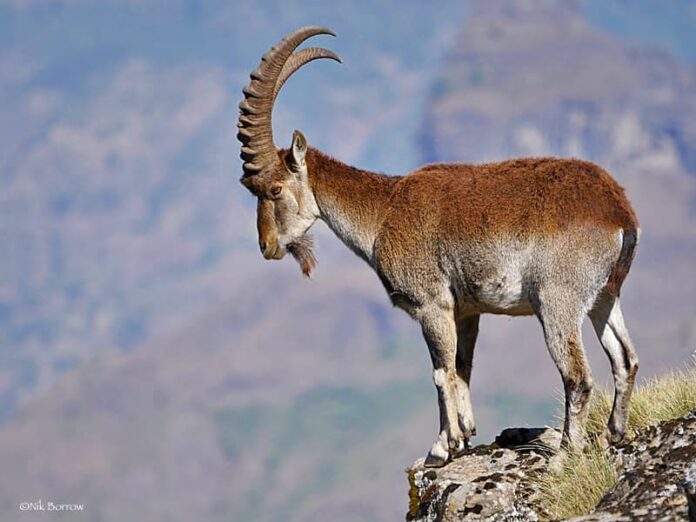
A Walia ibex has a chocolate-brown to chestnut-brown coat with a white belly and lighter gray legs. This one also has very large horns that curve backward, and they are so long they reach up to 110 centimeters. The most special part about Walia ibex is the black beard that only males have. On top of that, the older the males are, the longer and thicker their beards are. Males are larger than females, and of course, they have larger horns than females.
Also known as the Abyssinian ibex or Ethiopian ibex, Walia ibex is from the Semien Mountains of the Ethiopian Highlands. These ibexes live in herds of 5 to 20 individuals but older and more mature males tend to be solitary. Regardless, they all live in very steep and rocky cliff areas around mountain forests, scrubs, and subalpine grasslands. As grazers, their diet includes bushes, creepers, grasses, herbs, lichens, and shrubs. And it is also very common to see them standing on their hind legs to get young shoots. Not a lot of people know about this ibex species, and their population is not doing well currently. They are facing threats from habitat loss and hunting as well as encroachment and competition for natural resources.
6Kri-Kri
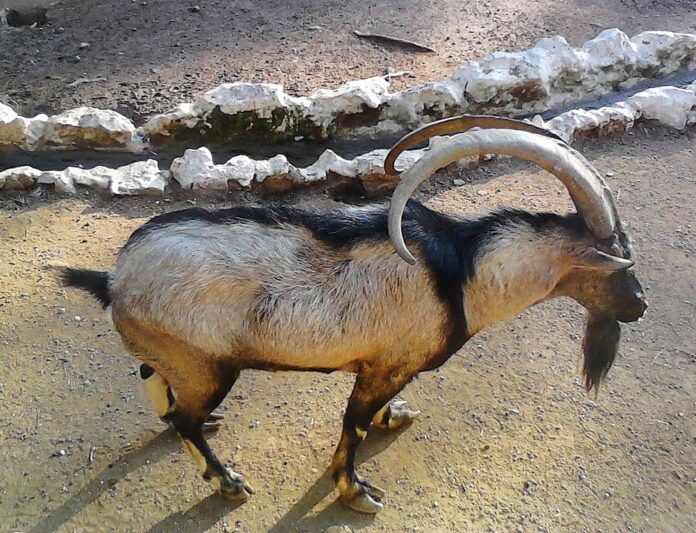
Used to be a subspecies of wild goat but not anymore, I am still talking about them anyway. A Kri-Kri has a light brownish coat with a darker band around its neck, and only males have a beard. An average Kri-Kri stands around 95 centimeters in the wild but only around 85 centimeters for the feral ones. What’s unique about them is that their horns sweep back from the head which is quite different from other wild goat species. Females’ faces are striped dark and light while males’ faces are dark but both have black and cream markings on their lower legs.
Kri-Kri are now feral goats found only in Greece, specifically on Crete and 3 other small islands. They like steep slopes that are away from roads and settlements and they inhabit alpine areas and dry mountains. In the wild, they are shy so they avoid humans but the domestic ones are alright around humans. Kri-Kri goats have strong legs that allow them to climb sheer cliffs and leap effortlessly.
7Markhor
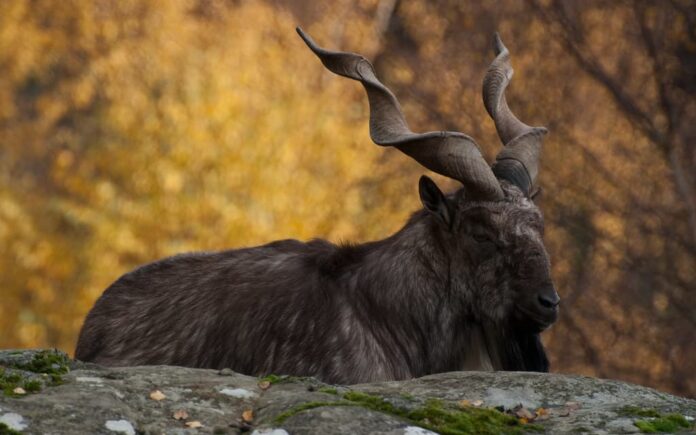
Markhor literally means snake-eater, is also known as the screw-horned goat, because look at those horns. A markhor stands between 65 to 115 centimeters at the shoulder, making them a tall wild goat species. It has a grizzly coat that is light brown to black in color, and the coat is smooth and short in summer. When winter comes, the coat becomes longer and thicker along with fur on their lower legs to keep them warm. Males have longer hair on the chin, throat, chest, and shanks while females have shorter hair and beard. However, both have tightly curled corkscrew-like horns that close together at the end but spread upwards toward the tips. You can easily tell a mature male by his long horns that can be up to 160 centimeters long. Meanwhile, a female’s horns are only around 25 centimeters.
This large wild goat species is native to Central Asia and South Asia, mainly in India, the Karakoram range, and Pakistan. Their range is also across some parts of Afghanistan and the Himalayas as well. Markhor inhabits mountainous terrain with steep cliffs as well as scrublands and lightly forested areas. They primarily feed on grasses and they also browse on shrub leaves and twigs as well. Despite their keen eyesight and strong sense of smell, there are still quite a few predators that attack markhor. Those are brown bears, Eurasian lynxes, Himalayan wolves, and snow leopards while golden eagles attack young markhor. However, their main threats are hunting and poaching for their horns to use in medicines. Plus climate change and habitat loss; hence their Near Threatened status on the International Union for the Conservation of Nature and Natural Resources.
8Rocky Mountain Goat
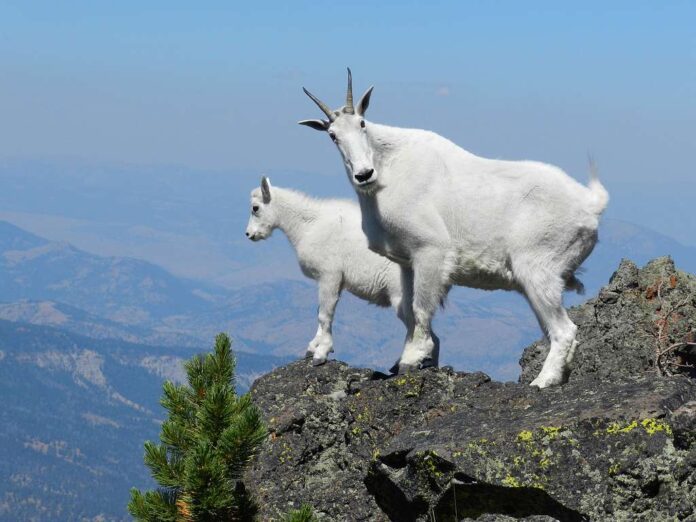
You wouldn’t expect a wild goat to look like this, would you? The mountain goat aka rocky mountain goat is a unique-looking wild goat species that looks like no others. First of all, a male rocky stands around 1 meter tall at the shoulder, and his horns are around 25 centimeters. Both male and female mountain goats have beards, long horns, and short tails. They also have woolly double coats that are grayish-white in color along with long hollow hairs for an outer layer. This dense wool protects them from the extreme coldness in winter temperatures in their natural habitats. More than that, their hooves have a hard and sharp rim that closes a soft inner pad. This inner pad provides traction on steep and uneven terrain which allows them to survive in their habitats.
Rocky mountain goat is endemic to the remote and rugged mountainous areas of Western North America. Every single photo of a rocky mountain goat is always on sheer rock faces or stiff spots. They prefer steep rocky cliffs in alpine or subalpine regions, and these herbivores spend most of their time grazing. While living high up, their diet is like other wild goats which are ferns, grasses, herbs, leaves, lichens, mosses, sedges, and twigs. Living on a higher elevation allows them to avoid predators such as black bears, brown bears, pumas, and wolves. Yet, their main threats are actually avalanches.
Tur
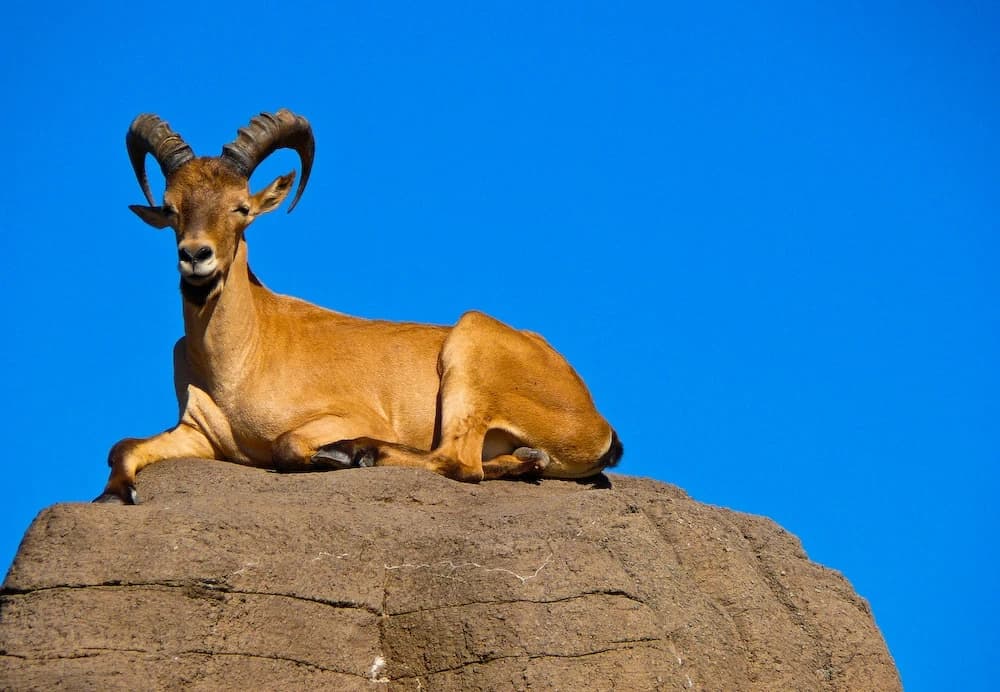
Tur, literally means Caucasian goat in Balkar, is a wild goat species that is endemic to the Greater Caucasus. There are two tur species including the East Caucasian Tur and the West Caucasian Tur. Unfortunately, both species are not doing very well and they are considered Endangered on the IUCN Red List. Want to find out more about the differences between these two? Feel free to check out the details below.
9East Caucasian Tur

This tur species also goes by the name Daghestani tur, and they look rather interesting. An adult East Caucasian tur stands at around 105 centimeters tall with a narrow body and short legs. A male has slightly lyre-shaped horns that reach 70 to 90 centimeters while a female’s horns are only 20-22 centimeters. Both sexes have short and sandy-yellow summer coats with dirty white underparts and dark brown stripes along the legs’ front surface. But females and juvenile males have slightly grayish coats in winter while males’ winter coats are solid dark brown. The East Caucasian tur lives in the eastern half of the Greater Caucasus mountains including Azerbaijan, European Russia, and Georgia. They inhabit rocky gorges in forests and rough mountain terrains in forests, alpine zones, and subalpine zones.
10West Caucasian Tur
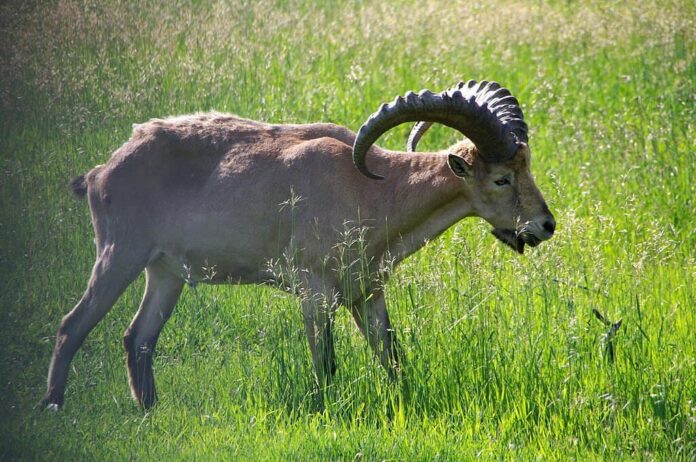
West Caucasian turs go by other names as Caucasian ibex, zac, and zebuder. It stands up to 1 meter tall with very similar body features as the eastern species. However, they have rusty-chestnut or rusty-gray coats with a yellow underbelly and darker legs as well as shorter horns. Their scimitar-shaped and heavily ridged horns are only around 70 centimeters at maximum. Males have dense, long, and curly hair on their foreheads that forms distinctive whorls, especially in winter. Both males and females have beards on the chin that become longer and fuller in winter.
As for this tur species, it lives in the other half of the Caucasus Mountain range; the western half. West Caucasian turs inhabit meadows, rocky crags, and rough mountainous terrains where they feed on grasses and leaves. While most wild goat species feed during the day, this one is a nocturnal so they eat in the open at night. Males and females live separately in single-sex herds, and they only come together during the mating season. Some of their main threats are habitat loss, hunting, and predation by lynxes, steppe wolves, Persian leopards, and Syrian brown bears.
11Wild Goat
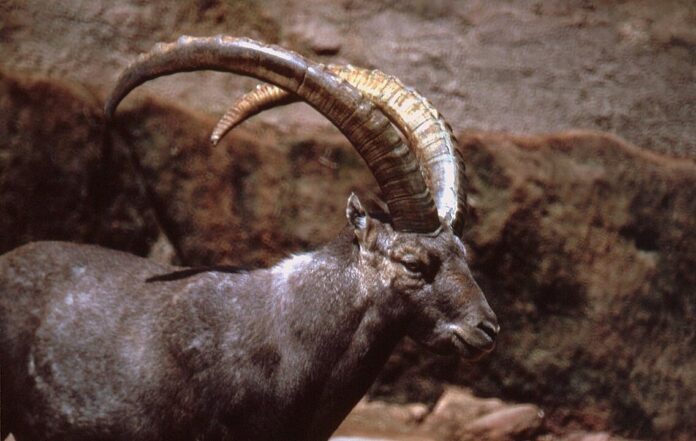
The name says it all, it is a wild goat that has a different appearance from many wild goat species above. Male wild goats are pale with a dark beard and chest in winter but both sexes have beards and horns. These goats are agile and hardy, and they have strong legs and feet that allow them to climb on bare rocks. Wild goats are one of the goat species with the longest horns, growing to 127 centimeters long. Their horns are curved and with an arc shape, and males use the horns to fight each other in the mating season.
Many also called them the West Asian Ibex due to their location. They are found in Turkey and the Caucasus in the west, living in mountainous habitats and rocky slopes. Where they live, wild goats feed on various grasses, plants, and shrubs. They fall under Vulnerable status on the IUCN Red List now due to competition for gazing areas, habitat destruction, and poaching.
Related Post: World’s Biggest Wild Bovines

